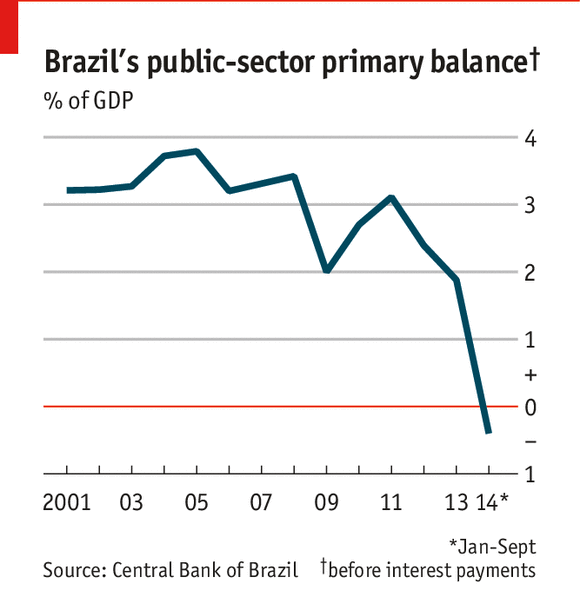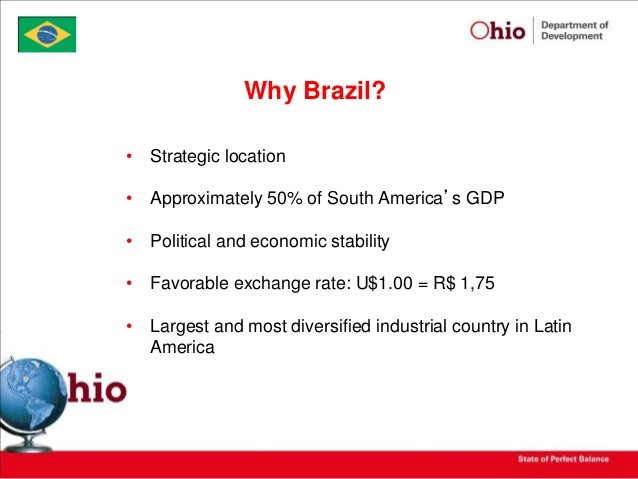Brazil Economy GDP Inflation Success and Failures
Post on: 16 Март, 2015 No Comment

How to Ruin an Emerging Market Success Story
Brazil has the largest economy in South America, and is the eighth largest in the world. In 2013, it produced $2.4 trillion in goods and services, as measured by purchasing power parity. However, its growth rate slowed from 7.5% in 2010 to .9% in 2012. It was slightly better in 2013, growing at 2.3%. Unfortunately, Brazil also has a mild stagflation. with an inflation rate at 6.2%. What happened?
When Dilma Rousseff became President in 2011, she increased public spending, raised the minimum wage, and forced the state-run banks to lend more. At the same time, the central bank lowered the discount rate from 11.5% to 7.25%. This triggered inflation, which Rousseff aggravated by cutting sales taxes and lowering prices on food, gasoline and bus fares.
Price controls hurt the profits of the state-owned oil company, Petrobras, and unfairly competed against Brazil’s formerly successful ethanol production. Business leaders curtailed investment in the face of such government intervention. This was only aggravated by problems in the government auctions of road and railway projects, and further interventions in the electricity and banking industries.
Thanks to this expansionary fiscal and monetary policy. inflation outpaced the newly-raised wages. As a result, c onsumers cut back their spending. To curb inflation, the central bank raised interest rates in 2012, from 7.5% to 8%. This is the same type of stop-go monetary policy combined with wage-price controls that caused U.S. stagflation in the 1970s.
Rousseff could lose the October 5 Presidential election to Socialist Party candidate Marina Silva. This adds more uncertainty to Brazil’s economy, since Silva is running against the status quo without a business-friendly agenda. (Sources: WSJ, Outsider from the Amazon Shakes Up Brazilian Politics, Sept. 5, 2014; The Economist, Brazil’s Disappointing Economy. June 8, 2013; FT, Brazilian president Dilma Rousseff defends record on economy. June 16, 2013; CIA World Factbook, Brazil )
Why Brazil Initially Wasn’t Affected by the Mortgage Crisis:
The local real estate market doubled between 2003-2008. This was helped by the creation of a local mortgage market, which did not suffer from the same fate as the U.S. That’s because Brazilian banks continued to hold the mortgages, and not sell them to a secondary market.
During that time, interest rates fell from 16%, loan periods grew to 30 years, and salaries soared. Although 70% of Brazilians owned their own homes, most were of low quality, giving homeowners both the equity and desire to move to better properties. (Source: The Economist, Brazil nuts, September 9, 2008)
Brazil’s Economy Was Damaged When Global Demand Fell:
The 2007 credit crisis forced the value of Brazil’s currency, the reais, to fall as currency traders invested in the safer dollar. A weaker currency raised prices of imports. increasing inflation.
Normally it would have helped raise Brazil’s exports by lowering their prices overseas. However, the global recession reduced both demand and prices for commodities. Brazil’s primary export. As a result, Brazilian companies cut production and jobs. (Source: Bloomberg, Brazil Economy Comes to Standstill as Output Plunges. February 3, 2009)
Brazil’s economy contracted for two quarters, but it came out of recession earlier than other emerging market countries. By 2010, the economy grew 7.5% — the highest in the 25 years!
How Lula Strengthened Brazil’s Economy:
Former President Luiz Inacio Lula da Silva, known worldwide as Lula, enforced an economic discipline that helped it withstand the 2008 financial crisis. In 2007, Brazil’s economic growth was 5.4%, inflation dropped to 3.6% and the current account surplus increased to $3.6 trillion. As a result, Brazilians had more income to spend domestically. For these reasons, many investors agreed that Brazil was the strongest of the four BRIC (Brazil, Russia, India. China ) emerging market economies.
Brazil Paid Off IMF Loan Early:
In a highly unusual move for a Latin American country, Brazil paid off its debt to the International Monetary Fund (IMF ) a year ahead of time. Brazil’s final payment of $15.46 billion was made in December 2005. The funds came from Brazil’s monetary reserves of $66.7 billion.
President Lula Is Behind Brazil’s Success:

When elected in 2002, President Lula made economic growth his top priority. He stimulated the economy by increasing government spending. providing government jobs to the middle-class, and developing Brazil’s natural resources. In 2006, he won re-election against former Sao Paulo Governor Geraldo Alckmin in a landslide victory, 61% to 39%.
Criticisms of Lula’s Policies:
Many of Brazil’s economic benefits went to the higher classes. Lula’s spending aggravated some of the economy’s fundamental flaws:
- The public sector needs to be streamlined to allow public debt to be further lowered without losing services.
- Education needs to be both more of a priority and more evenly distributed.
Brazil’s Leadership Role in Latin American:
Brazil led in the creation of Mercosur, the Free Trade Area of the Americas (FTAA ), and the Group of 20 (G-20 ) coalition that represents developing country interests.
As a result of its leadership role, Brazil meets regularly in working sessions with the United States on trade and other issues. It continues to influence the rest of South America to be more pro-U.S. as opposed to the anti-U.S. sentiment of Venezuela and Bolivia. (Source: International Monetary Fund (IMF) web site, Voice of America web site, State Dept. web site)
Quick Facts About Brazil
- Ruled by Portugal for 300 years, became an independent state ruled by the military from 1822 to 1985, when it became democratic.
- Only slightly smaller in size than the U.S. Largest country in South America, bordering every country except Chile and Ecuador.
- Has 203 million people, 63% that of the United States. GDP per capita is increasing, and is now at $12,100, below the world average of $13,100 per person.














